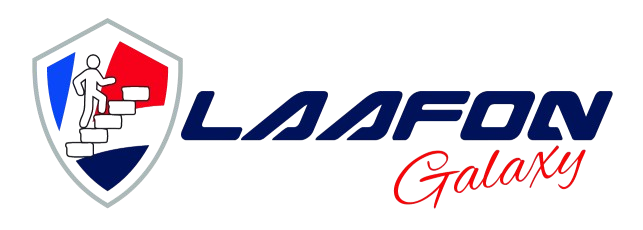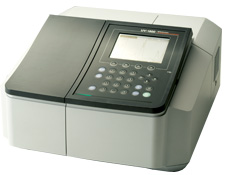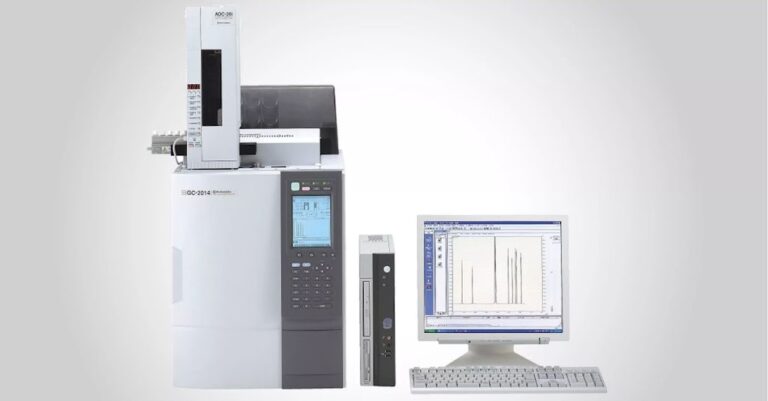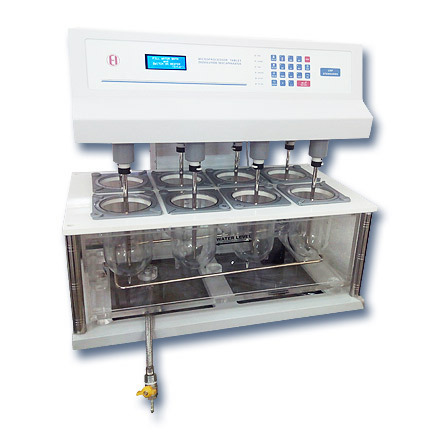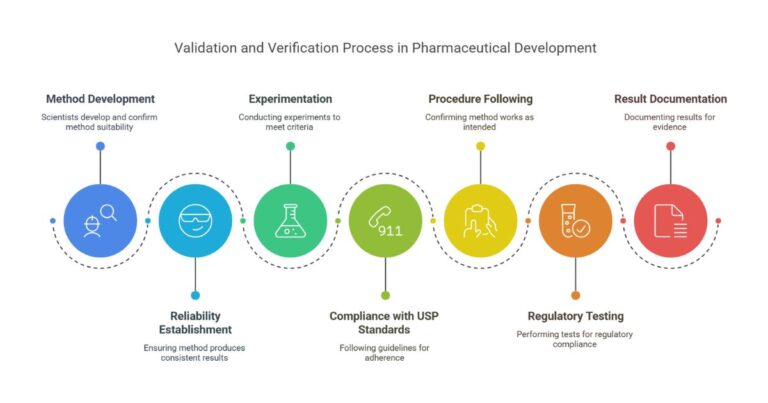SOP, Calibration, and features of UV-visible spectrophotometer
UV-Visible Spectrophotometry is an analytical technique that is widely used in the pharmaceutical industry for qualitative and quantitative analysis of substances. It works by measuring the intensity of light passing through the prepared sample solution and provides information about the absorption of light. The value of absorption of light by the sample shows the quantity and identification of substances present in the solution. It is a very important instrument in the laboratory for analysis purposes and regulatory compliance.
There are many UV-Visible spectrophotometers brands popular in the pharmaceutical industry. Mainly single beam and double-beam machines are used in the pharma industry. Shimadzu, Systronics, and Agilent are the most popular brands in India.
Table of Contents

ALSO READ:Pharmaceutical formulation plants for Sale in North India
Principle of UV-Visible Spectrophotometer
UV-visible spectrophotometer is based on the law of absorption of light. A light of a specific wavelength is passed through a sample solution. A portion of the light is absorbed by the substance present/dissolved in the solution. The amount of light absorbed is directly proportional to the concentration of the substance in the solution. The amount of substance is determined by measuring a known
concentration standard solution of the same substance that is being analyzed.
How UV-Visible Spectrophotometers Works?
The instrument UV-Visible spectrophotometer works according to Beer-Lambert Law. It measures the intensity of the light passed through a sample solution filled in a cuvette. Then compares it to the same light intensity passed through the standard
solution.
According to Beer-Lambert law absorbance of light is directly proportional to the concentration present in the solution and path length. The instrument first passes the light through the sample and then measures the absorbed light.
SOP for UV-Visible spectrophotometer
UV-1800 UV-VIS spectrophotometer has been designed in accordance with the United States, Japanese, and European Pharmacopoeia and is very user-friendly in features, the UV-1800 can be used either as a stand-alone instrument or as a PC-controlled instrument.
1.0 Objective: To lay down a procedure for Calibration and operation of UV spectrophotometer Model No. UV-1800, make
Shimadzu.
2.0 Scope: This procedure is applicable to the Quality Control Department of XYZ Pharmaceuticals
3.0 Responsibility
3.1 Quality Control Officer/Executive.
3.2 Quality Control Manager.
4.0 Accountability
4.1 QA Manager
5.0 Procedure:–
General Cleaning:
Ensure that power to the instrument is switched off. Clean the outer surface of the instrument with a dry cloth. If required, wipe with a cloth soaked in a good quality detergent. Subsequently, wipe with a piece of dry cloth.
Operation:
(1) Switch on the instrument from the mains and wait for Initialization.
(2) After completion of Initialization the instrument shows a different (mode MENU) on the screen.
(3) Login –User Name – administration
(4) Input password – Enter (If any)
(5) Select number 8 (Utilities) from MODE MENU, details will appear on the screen, Select the F3 key and press number 2 (instrument baseline correction) and wait for 15 minutes till baseline correction is over and press again numerical key 1 for select photometric.
(6) After baseline correction is over press the (Return) key and then the (Mode MENU) key. Now press key number 1, and Photometric) details will appear on the screen.
(7) Press (gotoWL) for the required wavelength using the numerical key by pressing key (F1), %T/Abs as per requirement %T stands for percentage transmittance and Abs stands for absorbance.
(8) Place the cells filled with diluents into the cell holder and press (Auto zero) key. Fill the front cell with the test solution and measure the %T/Abs as per the requirement
(9) Clean the cuvette in between the sample or standards by washing it with the diluents and rinsing it with the corresponding standards and samples.
(10) After the analysis, clean the cuvette thoroughly, press the (Start/Stop) key, and switch off the instrument. Subsequently, switch off the respective main supply.
Calibration of UV-Visible Spectrophotometer
It is very important to calibrate the UV-Visible Spectrophotometer for consistent and precise analytical results. It is a sensitive instrument that requires a high level of alertness and regular calibration. You can follow the below steps to calibrate the instrument.
(i) To check the correction of the absorbance readings generated by the spectrophotometer, the spectrophotometer needs to be calibrated. In a UV-Visible spectrophotometer, calibration is required for wavelength and absorbance.
(ii) Control of Wavelength:
(iii) Check with Holmium Filter: Verify the scale using the absorption maxima of the Holmium filter. Peaks should be seen at 240.15nm, 287.15nm 361.5nm, and 536.3nm. The permitted tolerance is ± 1nm for the ultraviolet range and ± 3nm for the
visible range.
(iv) Control of Absorbance Value: this can be checked by measuring the absorbance of potassium dichromate solution at the wavelengths indicated in the following table, which gives for each wavelength the exact value of A (1%, 1cm) and the permissible
limits. The tolerance for the absorbance is ±0.01.
| Wavelength (nm) | A (1%, 1cm) | Maximum Tolerance |
| 235 | 124.5 | 122.9 to 126.2 |
| 257 | 144.5 | 142.8 to 146.2 |
| 313 | 48.6 | 47.0 to 50.3 |
| 350 | 107.3 | 105.6 to 109.0 |
| 430 | 15.9 | 15.7 to 16.1 |
(v) Preparation of 0.005M Sulphuric acid: Dilute 2.8 ml of the sulphuric acid to 100 ml with diluted water and mix. Pipette out 10ml and make up the volume of 1000 ml.
(vi) Potassium Dichromate solution: Dry a quantity of potassium dichromate to constant weight at 1300C. Weigh accurately 57.0 to 63.0 mg and dissolve it in sufficient 0.005M sulphuric acid to produce 1000ml.
(vii) Potassium Dichromate solution (430nm): Dry a quantity of potassium dichromate to constant weight at 1300C. Weigh accurately 57.0 to 63.0 mg and dissolve it in sufficient 0.005M sulphuric acid to produce 100ml.
(viii) Calculation of A (1%, 1cm) A (1%, 1cm) at a particular wavelength is calculated as follows;
Absorbance of the solution at that wavelength A (1%, 1cm) =
____________________________________
Percentage concentration of the solution
(ix) Limit of Stray Light (1.2%w/v potassium chloride solution): transfer an accurate 1.2g of potassium chloride in 100ml volumetric flask, add about 80 ml distilled water, shake to dissolve, and make up the volume up to the mark with distilled water, and mix. The absorbance of the solution at a 200nm of path length 1cm should be greater than 2.0.
(x) Resolution (0.02% v/v toluene in n-hexane): Transfer an accurate 2.0ml of toluene in 100ml volumetric flask, add about 80mlof n-hexane, mix properly, and make up the volume up to the mark with n-hexane. Dilute 1ml of this solution to 100ml with n-hexane, and check the ratio of absorbance of the solution at maximum at about 269nm to that at the minimum at about 266nm it should not be less than 1.5.
(xi) Record the observation in the calibration report.
Calibration Frequency: Every three months.
Cleaning:
(1) Switch OFF the mains of the Instrument (Unplug the switch).
(2) Allow the oven to cool down to room temp if hot.
Safety Precautions
(1) Cuvette should be kept dry and clean place.
(2) Silica should be kept in the cabinet to absorb the moisture.
(3) Silica gel should be blue and dry.
(4) Ensure that electricity should not be interrupted during analysis.
Abbreviations:
1 SOP: Standard Operating Procedure
2 QC: Quality Control
3 min: Minute
4 cm: Centimeter
5 ml: Milliliter
6 Sec: Second.
7 %: Percentage
8 nm: Nanometer
9 mg: millimeter
10 0C : degree centigrade
Top 5 UV-Visible Spectrophotometers in India
In India, many brands of UV-visible spectrophotometers are used in pharmaceutical companies. Some top-selling and well-known products are listed below:
Shimadzu: It is a well-known brand with multiple models in the UV-Visible spectrophotometer segment. It has the most trusted brand in this field. In early 2000 Shimadzu 1600 was the top-selling product by the company. Models provided by this brand are as
- UV-1600
- Uv-1700
- UV-1800
- UV-1900i
- UV-2600i
- UV-3600i
Here are some differences between the Shimadzu UV-1900i and UV-2600i models:
- The Shimadzu UV-2600i has a wider wavelength range of 185-900 nm compared to the Shimadzu UV-1900i which has a range of 190-1100 nm.
- As per Shimadzu’sofficial website “The UV-1900i is a double-beam UV-Vis Spectrophotometer using Shimadzu’s original LO-RAY-LIGH™ diffraction grating technology. This product is equipped with LabSolutions UV-Vis software. The compact UV-2600i
(UV-2700i) is a mid-range UV spectrophotometer that can be used in a wide array of fields, and easily expanded to suit your analysis goals”. - The Shimadzu UV-2600i has a better stray light rejection of less than 0.00005%T at 220 nm compared to the Shimadzu UV-1900i which has a rejection of less than 0.0001%T at 340 nm.
Systronics: Systronics is an Indian company that is involved in the manufacturing of UV-Visible Spectrophotometers at low cost in comparison to Shimadzu and Agilent. The company used to make the models of the following products:
- UV-166
- UV-166 Plus
- UV-2201
Here are some differences between the Systronics 166 and 166 Plus models:
- The Systronics 166 Plus has a wider wavelength range of 190-1100 nm compared to the Systronics 166
which has a range of 340-960 nm. - The Systronics 166 Plus has a higher resolution of 0.1 nm compared to the Systronics 166 which has
a resolution of 1 nm. - The Systronics 166 Plus has a better stray light rejection of less than 0.05%T at 220 nm compared
to the Systronics 166 which has a rejection of less than 0.1%T at 340 nm.
Agilent: Agilent is an American brand in this segment that has some good products. Cary 60 UV-Vis and Cary 8454 UV-Vis are top models by the company.
Trulab India: It offers a wide range of UV-Visible spectrophotometers that includes T700 Vis Pro, it is a double beam UV vis with 8 cell holders.
LabIndia: Labindia Analyticals manufactures a unique product 3092 UV-Visible Spectrophotometers that have stray light 0.01% T. (220 nm Nal, 340nm NaNO2) & Photometric Range -4.0 – 4.0Abs)
Advantages and Limitations of UV-Visible Spectrophotometer
The UV-Visible spectrophotometer is a widely used analytical instrument that is very efficient for qualitative and quantitative analysis of drug molecules in the pharmaceutical industry. It measures the absorbance and transmittance of light in the UV and Vis range of the electromagnetic spectrum. It has many advantages and some limitations in the field of the analytical industry.
Advantages:
Versatility: It is a versatile technique that can test a wide range of molecules.
Sensitivity: It is a high-level sensitive instrument that can measure the trace level of substance present in the testing solution.
Speed: UV-Visible spectrophotometer is a fast testing technique in comparison to liquid chromatography and gas chromatography technologies. It provides readings in minutes.
Quantitative: It is a quantitative technique that is used to determine the quantity of analyte in the sample.
Cost Effective: It is a very cost-effective technique compared to HPLC and GC techniques. The cost of reagents is very low and economical for laboratories.
Limitations:
Limited Information: It provides limited information about the analyte like absorbance or transmittance of light. It can not provide information about the chemical structure and molecular information.
Not Auto calculation option: UV-Visible Spectrophotometer does not provide the result after completer calculation. It provides the absorbance values that must be put in an equational formula to get the exact analytical results.
Compound interference: In multiple compounds analysis it lacks the accuracy level because some compounds present in the sample interfere with the absorbance. It can lead to inaccurate results.
Range Limitations: It has limitations in terms of detection range. Usually, instruments available in the market do not have the full detection range capacity. Therefore, some compounds may not absorb light in available UV-visible regions.
Summary
UV-Visible is a versatile instrument in the laboratory, no pharma lab is understood to be complete without UV-Visible. It is the backbone of any laboratory. The calibration of a UV spectrophotometer is a very essential practice for every laboratory to ensure testing results are valid. UV-VIS spectrophotometer calibration should perform every 3 months to avoid any testing error by the machine. These
days very high-end technology apparatus have come in the market, they are also very sensitive in operation so their frequent calibration check is very necessary.
References:
- UV-Visible Spectrophotometry of Water and Wastewater” edited by Olivier Thomas and Christopher Burgess, published by Elsevier in 2017.
- “Principles of Instrumental Analysis” by Douglas A. Skoog, F. James Holler, and Stanley R. Crouch, published by Cengage Learning, 2017. [https://www.chemcome.com/wp-content/uploads/2020/11/Principles-of-Instrumental-Analysis-7th-edition-Skoog-by-Douglas-A.-Skoog-F.-James-Holler-Stanley-R.-Crouch-z-lib.org_.pdf]
- UV-Visible Spectrophotometry: An Introduction for Beginners” by David G. Watson, published by Royal Society of Chemistry, 2005.
- “Advantages and Limitations of UV-Visible Spectrophotometry” by Patience A. Agada and Charles O. Nwachukwu, published in the Journal of Chemical Society of Nigeria, Vol. 35, No. 2, 2010, pp. 48-54.
- “Validation of UV-Visible Spectrophotometer for Analysis of Pharmaceutical Products” by M. K. Jaiswal and S. S. Talele, published in the Journal of Applied Pharmaceutical Science, Vol. 3, No. 5, 2013, pp. 40-45.
- Operating Procedure for UV-Vis Spectroscope:- [https://mse.washington.edu/files/research/SOP_UVVis.pdf]
- The user manual of UV- spectrophotometer UV-1800 [SHIMADZU]
